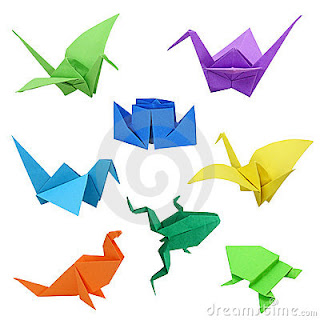The art of origami is often believed to have originated in Japan through the 17th century AD. It's laborious to specify precisely where and when origami developed because paper breaks down pretty quickly making it tough to maintain records. The art form in all probability developed in China around the first century AD and got here to Japan someday across the sixth century AD the place it finally became a cultural tradition.
At first as a consequence of the truth that paper was excessive priced origami was an artwork kind solely enjoyed by the elite and was used for practical functions similar to folding letters. Samurai would gave each other little paper good luck charms referred to as noshi and paper butterflies were folded for Shinto weddings.
Within the Edo interval (1600 - 1868) new methods were created to effectively mass produce paper. That is when origami began to fully grow to be the art that we all know today.
Origami instructions were handed/passed down individual to individual and no diagrams have been recorded until in 1797 when a guide referred to as Senbazuru Orikata (Find out how to Fold one thousand Cranes) was published. In Japanese mythology the Crane was believed to be a holy bird. As origami turned extra common the tradition that one would receive a want or acquire good luck from folding a thousand Cranes developed.
When other collections of diagrams began to get launched origami formally obtained a name.
The title origami comes from the Japanese verb oru which means to fold and the Japanese word for paper, kami. combining the 2 returns the phrase origami.
Modern origami was developed in the early 1900s by Akira Yoshizawa who is mostly considered to be the grandmaster of origami. Akira Yoshizawa invented the procedure of moist folding which concerned dampening the paper earlier than folding to offer accomplished models extra of a sculpted and three dimensional look. By 1989 he had created over 50,000 fashions and written eighteen books.
In the course of the Eighties a gaggle of folders started to to analyze the mathematical properties of origami. With the addition of pc software it was possible to create astoundingly complex fashions corresponding to those you see today.
Apparently enough, Japan isn't the only nation with a vibrant origami history. Origami was also developed by the Moors of Africa.
While Japanese origami is known for creating depictions of animals, Islamic traditions didn't allow for artists to create depictions of dwelling creatures. This was primarily based on the second commandment of the Ten Commandments forbidding the creation of graven images.
 |
| Elephant, Made Using Paper |
The Moors as a substitute investigated the mathematics of origami and developed detailed shapes and tessellations.
When the Moors invaded Spain within the 8th century AD they brought origami with them and soon after it began to spread round Europe.











0 comments:
Posting Komentar